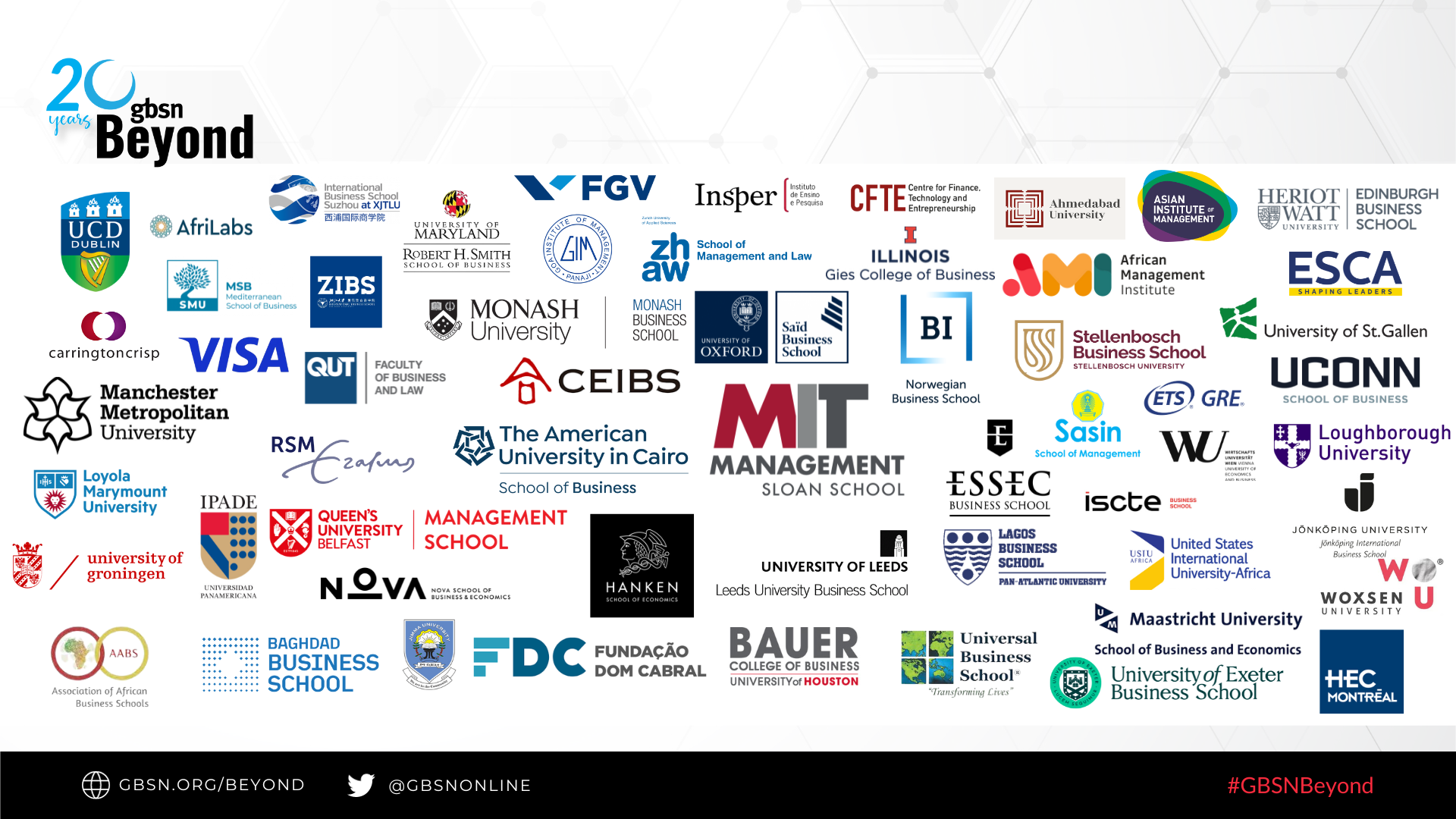About this time three years ago, the two of us were interviewing deans and business leaders, trying to make sense of the future. Covid-19 was breaking our normal, magnifying long-standing injustices, and pulling the future forward. We wanted to see the world beyond what was happening at the time.
What we discovered, however, was that the interviews were more about the journey than the destination. As we wrote in the preface to The World After Covid-19, the interviews often revealed more about leading and living during a profound crisis. The people we interviewed were discovering different aspects of their work and themselves, just as we were learning about both. They reminded us that leadership is an intensely human activity, and that’s why it is so difficult.
It’s now 2023 and for many of us the first year of the Covid-19 pandemic is starting to feel like a distant memory. That’s why we are resharing the introductory chapter to the book. Perhaps you’ll be interested in comparing what is happening now against what leaders were predicting then. But we think the real value is to help you to recall and reflect on what it was like to lead in the early stages of the pandemic, and reflect on what that means for your leadership today and in the future.
Introductory Chapter from The World After Covid-19
by Soumitra Dutta and Dan LeClair
When, in early December 2019, news of a pneumonia-like illness emerged from the Chinese city of Wuhan, few beyond infectious disease experts had any inkling of what might follow. By 30 January 2020, when the World Health Organization (WHO) declared a “public health emergency of international concern” – its highest level of alarm – the novel coronavirus had not yet spread very far. There were 98 cases and no deaths in 18 countries outside China; the WHO recorded eight cases of human-to-human transmission outside China – in Germany, Japan, the US and Vietnam.
Four months on, the public health emergency had become a global economic crisis. National governments tried desperately to slow the spread of the virus by limiting movement and gatherings. Global supply chains collapsed and the flow of people across borders slowed to a trickle. Every organization, large and small, local and global, public and private, was profoundly impacted. It was a time of great uncertainty.
Everyone was sprinting, working overtime and under a great deal of stress to adapt to the situation. It was no different for the team at the Global Business School Network (GBSN). But, amid the chaos, we wanted to know how best to live up to our mission: to “improve access to quality, locally relevant management and entrepreneurship education for the developing world”. How could we support the strong network we’ve built up over the years? What lessons might that network learn from each other’s adaptations and challenges? Business school deans, caught in the very teeth of these changes, seemed a logical place to begin. So we reached out to deans from schools in countries like Nigeria, England, Mexico, Egypt, China and the United States with an invitation to speak with us. We invited them to pause, look up and ahead; to see past the immediate emergency and to think about what the future might look like in a world after Covid-19. The deans were generous with their time and many agreed to introduce us to business leaders who were willing to have a similar conversation.
We conducted the interviews between April and June in 2020. Of course, everyone who reads the transcripts will have the benefit of knowing all that has happened since then. Readers will know that the virus has taken more than two million lives worldwide since then. They will know how long it took to develop, test, and approve vaccines; and about the rush to distribute them fast enough to get ahead of the variants. They will know more about Covid inequities and the virus’s long-term trajectory.
At the time of this writing, February 2021, the pandemic is far from over. The world after Covid is still under construction, but we hope insights from the interviews will encourage and enable us to “build back better”, as they say. Regardless, we believe the true value of these interviews is that they capture the moment: the views during the crisis about the unknown future to come. Our memories are surprisingly short and soon it will be easy to forget how we felt and the future we envisioned during that stressful time. We also hope the interviews serve as inspiration and guidance to leaders everywhere, especially about managing in a crisis. The interviews were at once deeply personal and necessarily universal. Several themes emerged.
HUMAN – AND HUMANE – LEADERSHIP
We sensed that our questions about the crisis were not just intellectual exercises for the leaders we interviewed. Responses were personal and sometimes emotional when leaders discussed their responsibilities for the health and well-being of their people. Managing organizations has always been hard; Covid made it a lot harder.
We were struck, too, by how vulnerable our interviewees were willing to be. Their answers to personal questions, such as how their own leadership might change and what shifts they’d already seen in their own lives, were deeply considered and freely shared. Some were pursuing new hobbies; others found solace in exercise and time in nature. Most were spending more time with their families than they had in years, reconnecting and learning about the people who matter most. But they had not lost sight of those beyond their immediate circles: there was a real sense of connection and compassion with not just employees, but their employees’ families and communities more broadly. Somehow, they held rapid change –– that acceleration necessitated by Covid-19 –– and small, personal moments together. It wasn’t easy, as Jean-François Manzoni, President of the International Institute for Management Development (IMD) in Switzerland explained:
“You’re expected to be cheerful, serious but empathic, patient, decisive but also incredibly compassionate. This job requires extraordinary amounts of patience, empathy and compassion. You’ve really got to work on yourself to make sure that you remain in that space. And it’s actually quite challenging to do, especially with all the additional pressures you face as a leader, including on the personal front as your own family may also be needing more from you.”
This isn’t, as Manzoni and other interviewees made clear, to suggest that leaders shouldn’t be honest and open about their anxieties. Nor, as Sangeet Chowfla – the President & CEO of the Graduate Management Admission Council (GMAC™) – said, did leaders need to pretend to have all the answers. Chowfla had been asking his staff: “What’s the way out? Where’s the light at the end of the tunnel? What do we know? What do we not know?”
He added: “All of us are in search of that light at the end of the tunnel. Even if we don’t have clarity about the light, the fact that we are looking and engaging everybody in search of that light, becomes a very important part of what we do as leaders. It is making certain that everybody is on board so that we can find a way to the end of the tunnel.”
GLOBALIZATION VS TURNING INWARD
Geo-politics was a crucial part of our conversations. Globalization and the shifting role of supply chains emerged as strong themes. Asia’s role as a growing power was repeatedly highlighted; some interviewees suggested that Europe could harness the crisis to re-establish itself as a force to be reckoned with, while others believed Europe was going to be left behind by the Asian giants. The US’s inward turn unsettled many.
In those early days of the pandemic, our thought leaders wanted to know whether the world would work together, or pull apart; they were struck by just how sharply and fast the existing lines between the “haves and the have nots” had leapt into focus. Just about a year on, it is sobering to see how much those fault lines have widened, and saddening to realize how much pulling apart has occurred; by March 2021, wealthy nations were racing ahead with vaccination programs while their poorer counterparts were left floundering.
Dr Enase Okonedo, now Deputy Vice-Chancellor of Pan-Atlantic University, Nigeria, was Dean of the Lagos Business School at the time of our interview. She pointed out that globalization –– “and seeing things as a global village, with the easy transfer of goods and people” –– had seemed set to remain a way of life before the pandemic.
“Now nations are starting to rethink things like trade policy, foreign policy, as well as what happens in their domestic economies. From my perspective, there is a retreat from what has become the norm in recent years towards more domestication of a number of things. So, I envisage a shift, possibly in the short-term but certainly in the long-term, from globalization to keeping things within borders, because of the impact of Covid-19 on economies and disruptions in the supply chain.”
Dr Bing Xiang, the Founding Dean and Professor of China Business and Globalization at Cheung Kong Graduate School of Business (CKGSB), was among those who echoed Okonedo’s sentiments on this point.
“In a sense, economically, (the way countries reacted to Covid-19) may represent a strong pushback against globalization. This de-globalization impact will be huge and long-lasting, potentially even setting globalization back 30 to 40 years.”
Some, like Claudia Jañez, former President of DuPont Latin America, suggested this shift might turn out to be positive in the long run. She argued that globalization might become as much about collaboration as it is about openness, and that countries may begin to genuinely unite to solve shared problems.
Perhaps these global shifts might also signal a turn towards a new morality – both in business and in the size of what Veneta Andonova, the Dean of Universidad de los Andes School of Management in Colombia, calls the “moral circle”. In our interview, Andonova said she and her colleagues had been “discussing the way the world and life will be, how it will affect the way in which we interact with different parts of society – be it indigenous groups, business, or government”.
“We are seeing that these groups have started sending signals of how the state of affairs should be and how we should interact. The degree to which we are capable of aligning and coming together with a common version of how we share and interact will be essential.”
TEACHING WITH TECH
All the leaders we interviewed agreed that the pandemic had accelerated digital transformation. Suddenly, companies had to coordinate work in a physically dispersed environment. The Covid-induced change was profound in education, where technology has had less of an impact than many experts predicted in previous years. A major topic in the interviews was the role of platforms, such as Zoom, in ensuring continuity of synchronous teaching and learning when health restrictions made residential learning impossible. Schools were forced to shift quickly, almost overnight, to deliver instruction, facilitate peer-to-peer engagement, and offer project-based experiential learning, all in a virtual environment. Faculty had to learn new digital skills and schools had to develop new models and capabilities.
Many of the leaders in education and business talked about how surprised their colleagues were to learn so much of their work can be accomplished without being together in the office. Faculty, in particular, began to discover ways of using technology to make education more efficacious as well as more efficient. It could also, some interviewees suggested, contribute to more openness and diversity.
Erika James, now Dean of The Wharton School of the University of Pennsylvania, was John H. Harland Dean of Emory University’s Goizueta Business School when we interviewed her. She argued that technology could allow business schools to “open ourselves up to more diverse populations around the world in ways that were more difficult to do in a strictly residential format”.
It wasn’t just how business schools teach that seized deans’ attention — the what was crucial, too. As more faculty rushed to understand new platforms better, crafting their usual in-person classes for digital formats, they also began to reflect on whether existing research might inform at least part of the world’s response to Covid-19. François Ortalo-Magné, Dean of the London Business School, said: “Faculty turned to their research and from the very beginning of the pandemic they ran a series of webinars. They asked, ‘how can I use my research to contribute to the new Covid-19 world?’ Faculty are using their insights and knowledge in a very fresh, immediate and relevant way.”
Zander Lurie, the CEO of SurveyMonkey, proposed that future business school students — particularly those who are already employed but might consider a further degree — would think differently about their return on investment in a post-Covid world. He identified three “learnings and tools” students would seek out when choosing a business school: curiosity, agility and prioritization.
A few of our interviewees wondered whether elements more often taught in humanities courses may begin to infuse business school curricula. Nelly ElZayat, the co-founder and director of Newton Education Services and an advisor to the Minister of Education in Egypt on early childhood education and education policy, was among them.
“This pandemic has left us all with a lot of challenges and many of them are socio-emotional; I think this affects businesses, teens, leaders in business, everybody. This is something that business schools need to weave into their programs; these skills that you need to survive … Course material or case studies that highlight things like resilience, empathy and teamwork.”
WHERE OUR NETWORK FITS IN
It wasn’t just the interviewees who took the opportunity to pause and reflect deeply during a time of uncertainty, anxiety and near-constant adaptations. These conversations helped us — and will help GBSN more broadly — to realize that the network’s role must go beyond improving access. It is also to facilitate innovation and change in management education and development.
GBSN’s mission has always been about benefiting society. We say that it was created for SDG4, which is about access to quality education, even before the SDGs were adopted. By building education capacity, GBSN supports the development of leaders that generate jobs and improve communities.
But it’s not just about education anymore. Covid-19 attracted additional attention to two other ways that business schools make a difference: through research and community engagement. Leaders commented about the general responsibility to help organizations survive — and not only their own. Many businesses deployed students and faculty to address local challenges brought on by Covid. For example, from the beginning many business schools collected, compiled, and communicated about data and information to support policy and business decisions. Students and professors have also worked on projects to help local SMEs pivot online, and to restart the local economy.
GBSN supports research to increase our understanding of business management and entrepreneurship in the developing world. The network is also creating new platforms, such as competitions, to increase the engagement of students and faculty in addressing community challenges. These activities enable business schools to more directly impact communities. GBSN is making a medium and long term investment in development through education and a more immediate impact by bringing students and faculty into their communities.
GLOBALLY CONNECTED, LOCALLY RELEVANT
By definition the Covid-19 pandemic is global. But every country and community experiences and addresses the virus differently. It was interesting to consider the differences across perspectives from interviews in Nigeria, Brazil, Colombia, China, the US, Egypt, Mexico, and many more countries. Business management is contextual and, since its inception, GBSN has been committed to contextual relevance in everything it does. It is about empowering people locally. It is a global network committed to supporting local initiative, which we believe is as important, if not more so, as global leadership in achieving the SDGs.
For GBSN, relevance is not just about location and content, it is also about people and experience. We believe that peer-to-peer learning and experiential learning are essential for management education to be effective. For example, the GBSN Management Development Institute offered in partnership with Johnson & Johnson emphasizes local content, peer support, and a community-health project. And, as described above, GBSN has started to offer new opportunities for experiential learning in and for the developing world.
POWERED BY TECH
Like other organizations, GBSN was also forced to move online and has, as a consequence, developed new ways of accomplishing its mission, especially with its training and networking events. Technology has been particularly important in strengthening connections between schools internationally, especially since the network has grown considerably in recent years. Early in the pandemic, we initiated Cross-Border Collabs to bring together the whole international community on the first Thursday of every month to explore trends and collaborative opportunities related to the GBSN’s mission. Moving forward GBSN aims to put technology first in everything it does.
COLLECTIVE ACTION (ACROSS BORDERS, DISCIPLINES, AND SECTORS)
As discussed in many of the interviews, Covid-19 has elevated the need for organizations to work together to achieve important objectives. This is especially true when it comes to international initiatives, as travel between countries has been more restricted. GBSN plays an important role in facilitating collaboration.
But it is not just about international collaboration: higher education remains remarkably siloed. So in addition to connecting schools across borders, GBSN has been working towards connecting scholars and students across disciplines, such as engineering and health, as well as bridging the gap between business and business education. Currently, GBSN is developing programs to involve business students from member institutions from around the world in CSR programs with companies, such as Deutsche Post DHL and Ecobank Academy. The idea is for GBSN to invest in doing work together that can’t be done alone.
THE STRENGTH OF THE NETWORK
In order to achieve its mission and purpose, the GBSN has been building its strength. Part of it comes from size. At the beginning of 2019, the network had 69 schools. Now it has more than 110. Strength comes not only from size, but also diversity. At the beginning of 2019, members represented 39 countries. Now they represent more than 50. In addition to geographic diversity, GBSN has been engaging a wider array of organizations in the network, including higher education institutions with distinctive strengths, such as online teaching, competency-based education, and corporate management development, and businesses that are investing in their communities through education and development.
Finally, GBSN is getting stronger by building more connections between members. A large family isn’t very powerful if nobody talks to each other. By offering international competitions, monthly member gatherings, and learning communities, GBSN is building more and more connections between members that will continue to strengthen the network’s capacity to achieve the mission.
Historically, GBSN can be described as a “project driven development organization” that engaged in projects to build education capacity in and for the developing world. Today, GBSN can be described as a “purpose driven network organization”. While projects remain a big part of the GBSN, its power comes more from the network, which is larger, more diverse, and connected than ever.
LOOKING AHEAD
By the time this introduction was written, more than a year after Covid first began its frightening, inexorable march around the world, it was clear that our interviewees had been extraordinarily prescient. Many of their predictions were borne out. And, as they all anticipated, there is much to be hopeful about. As we look forward to a post-pandemic world and beyond, many more questions remain — as explored in our concluding chapter. It is our hope, here at the interface of society and business; of higher education and business; of leadership and service, that they and others in our network will continue to shine a light on all that matters as we forge ahead in a world that is likely forever changed — perhaps, against all odds, for the better.
Dan LeClair, CEO
Dan LeClair was named CEO of the Global Business School Network (GBSN) in February of 2019. Prior to GBSN, Dan was an Executive Vice President at AACSB International, an association and accrediting organization that serves some 1,600 business schools in more than 100 countries. His experience at AACSB includes two and half years as Chief Strategy and Innovation Officer, seven years as Chief Operating Officer, and five years as Chief Knowledge Officer. A founding member of the Responsible Research in Business and Management (RRBM) initiative, Dan currently participates on its working board. He also serves in an advisory capacity to several organizations and startups in business and higher education. Before AACSB, Dan was a tenured associate professor and associate dean at The University of Tampa.
Dan played a lead role in creating a think-tank joint venture between the European Foundation for Management Development (EFMD) and AACSB and has been recognized for pioneering efforts in the formation of the UN’s Principles for Responsible Management Education (PRME), where he served on the Steering Committee for many years. Dan has also participated in industry-level task forces for a wide range of organizations, including the Chartered Association of Business Schools, Graduate Management Admission Council, Executive MBA Council, and Aspen Institute’s Business and Society Program.
Widely recognized as a thought leader in management education, Dan is the author of over 80 research reports, articles, and blogs, and has delivered more than 170 presentations in 30 countries. As a lead spokesperson for reform and innovation in management education, Dan has been frequently cited in a wide range of US and international newspapers, magazines, and professional publications, including the Wall Street Journal, Financial Times, New York Times, China Daily, Forbes, Fast Company, and The Economist. Dan earned a PhD from the University of Florida writing on game theory.
S
Soumitra Dutta, Chairman, Board of Directors Global Business School Network
Dean, Saïd School of Business, Oxford University
Professor of Management
Former Founding Dean
Cornell SC Johnson College of Business
Chairman, Board of Directors
Global Business School Network
Soumitra Dutta served as the founding dean of the Cornell SC Johnson College of Business from July 2016 till January 2018. Currently he is a Professor in the Operations, Technology and Information Management Area. Previously, he was the Anne and Elmer Lindseth Dean of the Samuel Curtis Johnson Graduate School of Management.
Prior to coming to Cornell, he was on the faculty of INSEAD, a leading international business school in France and Singapore.
He is an authority on technology and innovation policy and is the co-editor and author of the Global Information Technology Report, published by the World Economic Forum and the Global Innovation Index, published by the World Intellectual Property Organization – two influential reports in technology and innovation policy.
Dutta is on the board of Sodexo (a food services and facilities management multinational with $20bn market capitalization), Dassault Systemes (a leading 3D software firm with $30bn market capitalization) and advisory boards of several business schools. He has co-founded two firms, including Fisheye Analytics, which WPP group acquired. He was also the Chair of AACSB (July 2017 to January 2018), the leading global body for the accreditation of business schools. Dutta is a member of the Davos Circle, an association of long-time participants in the Annual Davos meeting of the World Economic Forum, and has engaged in a number of multi-stakeholder initiatives to shape global, regional and industry agendas.
Dutta received a B. Tech. in electrical engineering and computer science from the Indian Institute of Technology (IIT), New Delhi, a MS in both business administration and computer science, and a PhD in computer science from the University of California at Berkeley. In 2017, he received the Distinguished Alumnus Award from his alma mater IIT Delhi.























